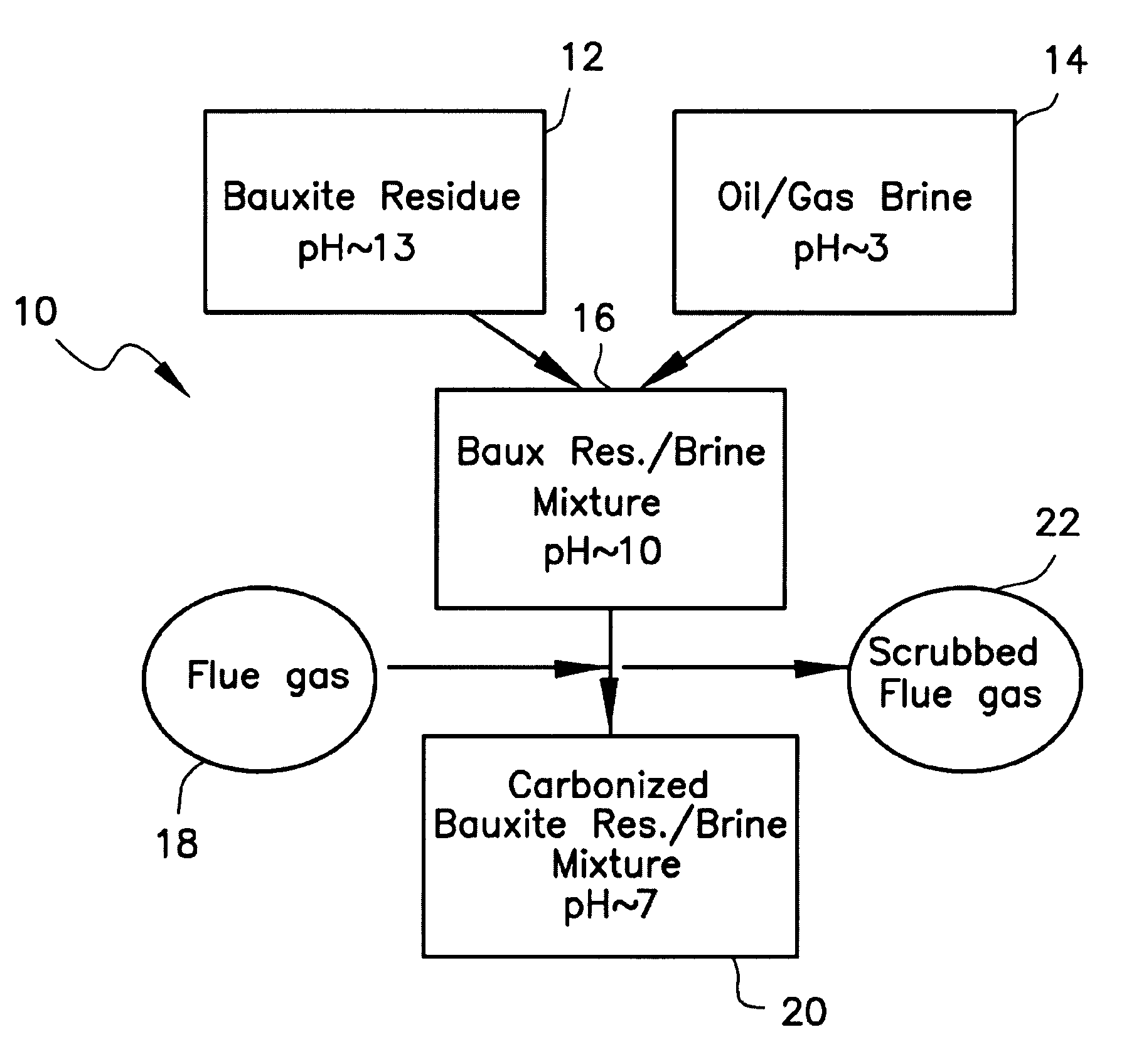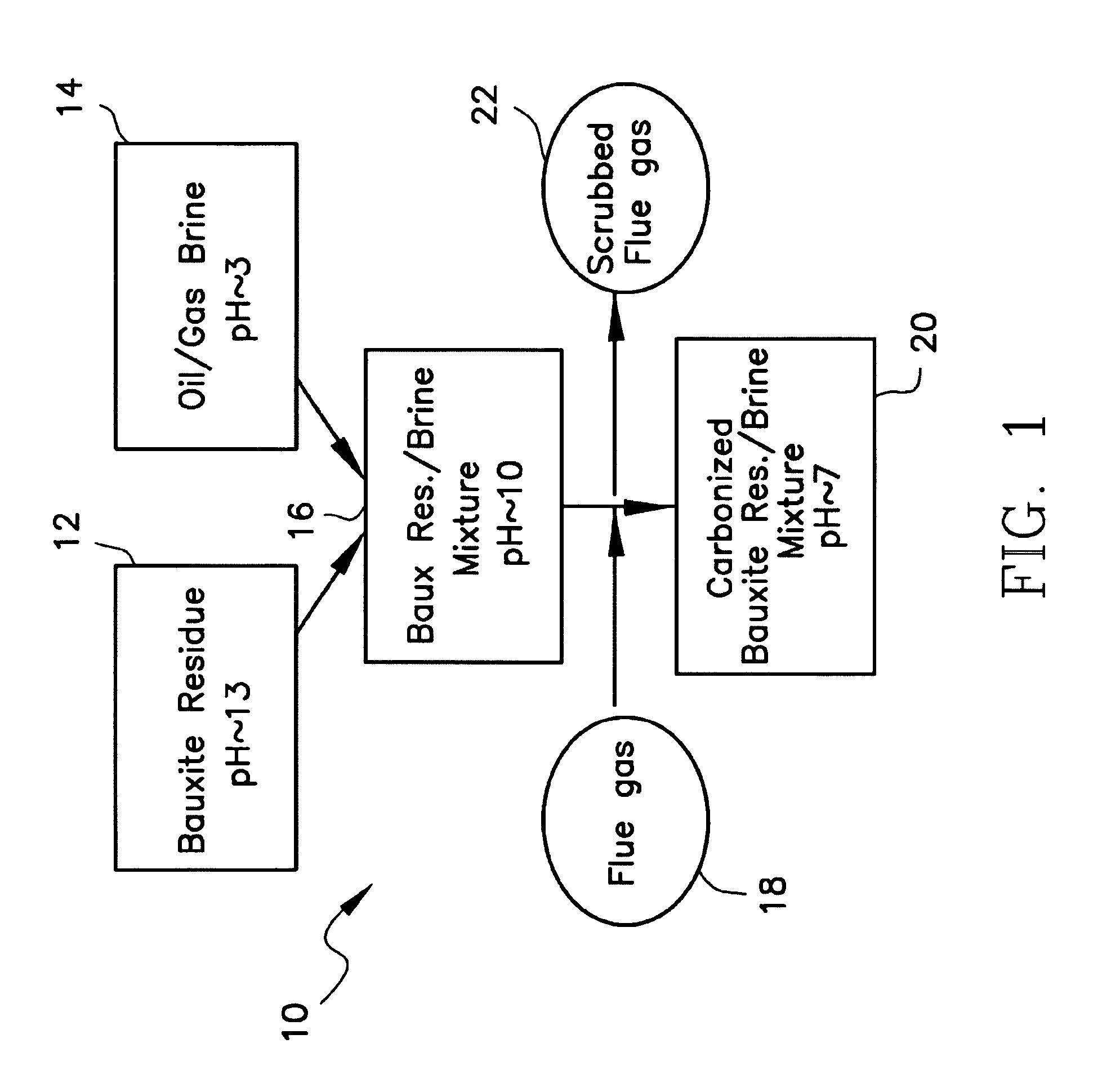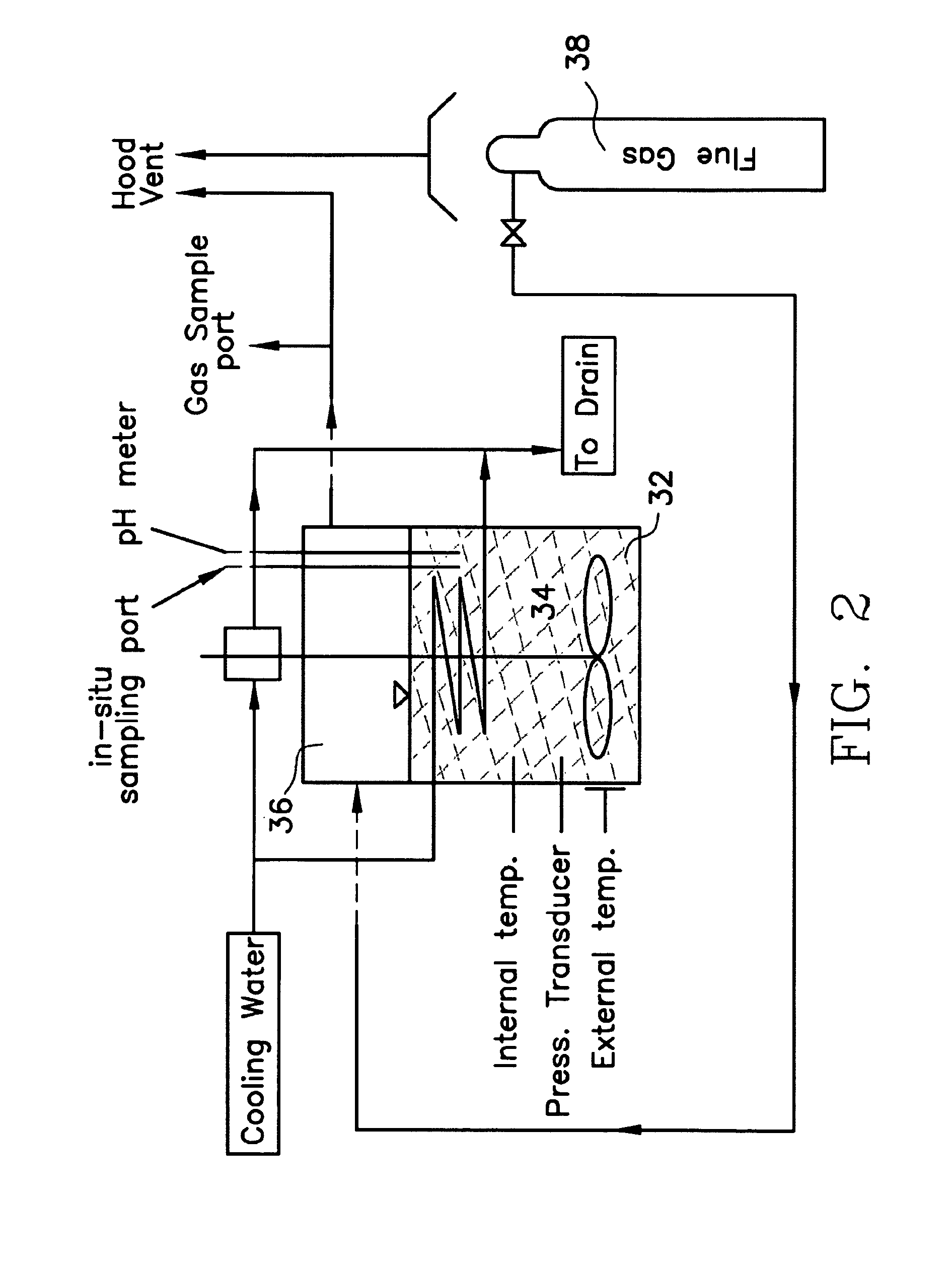Method for sequestering CO2 and SO2 utilizing a plurality of waste streams
a waste stream and co2 technology, applied in the direction of dispersed particle separation, separation processes, waste water treatment from gaseous effluents, etc., can solve the problems of large volume, economic viability applications for dealing with bauxite residues, and significant technical and economic hurdles, so as to reduce the potential impact of caustic residues, reduce saline wastewater volumes, and reduce the ph of bauxite residues
- Summary
- Abstract
- Description
- Claims
- Application Information
AI Technical Summary
Benefits of technology
Problems solved by technology
Method used
Image
Examples
Embodiment Construction
[0028]The invented process contemporaneously removes both CO2 and SO2 from effluent fluids. This represents a significant improvement in sequestration strategy because separation of CO2 and SO2 from bulk gaseous byproduct stream is not necessary prior to treatment. The invented, integrated use of bauxite residue / brine mixtures in the process provides a cost effective means of direct flue gas treatment and could be an attractive alternative for power plants located near bauxite residue tailings disposal sites. There is great interest from the aluminum industry to combine neutralization processes with CO2 and SO2 sequestration.
[0029]Specifically, the inventors found that mixtures of oil / gas wastewater brine and bauxite residue can effectively sequester acid gases, including, but not limited to, CO2, SO2, NO, H2S, and HCl, through a combination of solubility and long-term mineral trapping. The invented bauxite residue / brine mixture has a high alkalinity that can be used for neutralizin...
PUM
| Property | Measurement | Unit |
|---|---|---|
| volume percent | aaaaa | aaaaa |
| volume percent | aaaaa | aaaaa |
| volume percent | aaaaa | aaaaa |
Abstract
Description
Claims
Application Information
 Login to View More
Login to View More - R&D
- Intellectual Property
- Life Sciences
- Materials
- Tech Scout
- Unparalleled Data Quality
- Higher Quality Content
- 60% Fewer Hallucinations
Browse by: Latest US Patents, China's latest patents, Technical Efficacy Thesaurus, Application Domain, Technology Topic, Popular Technical Reports.
© 2025 PatSnap. All rights reserved.Legal|Privacy policy|Modern Slavery Act Transparency Statement|Sitemap|About US| Contact US: help@patsnap.com



